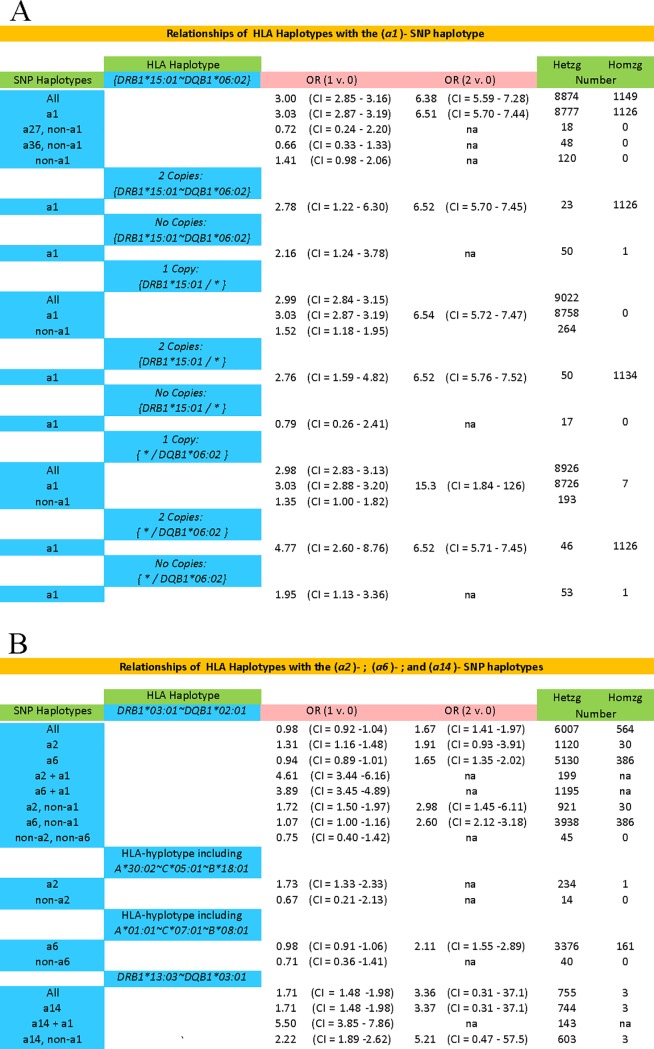Fig 5.
Disease-associations for the different SNP-haplotype combinations with the Class II HLA haplotypes of: (A) DRB1*1501~DQB1*0602 and: (B) DRB1*03:01~DQB1*02:01 & DRB1*13:03~DQB1*03:01. The odds ratios (OR) are given comparing cases to controls with regard to carrying either one or two copies of the risk-haplotype as opposed to carrying zero copies. In these circumstances, the disease association varied markedly, depending upon which SNP-haplotype carried the HLA-haplotype. Such an observation indicates that the observed disease-associations were not due to these specific HLA alleles but, rather, to something else, which was present on these SNP-haplotypes (see text). For unclear reasons, this data set did not replicate the findings of Chao and coworkers [19] with respect to the HLA-B*08, HLA-B*13, HLA-B*27, HLA-B*32, and HLA-B*52 haplotypes (see text). In the WTCCC data, however, vast majority (96−100%) of the haplotypes that carried these HLA-B alleles, when they included the HLA-DRB1*15:01 allele, also carried the (a1) SNP haplotype. As a result, because they also carried the (a1) SNP haplotype, each of these haplotypes was strongly associated with an increased MS-risk except for the extremely rare HLA-B*52~HLA-DRB1*15:01~a1 haplotype (where OR = 1.01).

